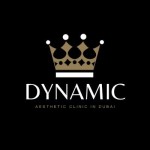Acne scars can be a persistent concern, affecting both confidence and self-esteem. Whether caused by severe breakouts or improper handling of acne, these scars can leave a lasting impact. Fortunately, various advanced treatments can help reduce or even eliminate acne scars, restoring smooth and clear skin. Many people looking for skin solutions also explore Acne Scars Treatment in Dubai, which shares similar principles of advanced laser technology for skin renewal.
Types of Acne Scars
Before choosing a treatment, it is essential to understand the different types of acne scars:
Atrophic Scars
These scars appear as depressions in the skin due to the loss of collagen. The three main types include:
- Ice Pick Scars: Deep and narrow scars that resemble punctures.
- Boxcar Scars: Wider depressions with defined edges.
- Rolling Scars: Wave-like indentations that create uneven skin texture.
Hypertrophic and Keloid Scars
Unlike atrophic scars, these appear as raised bumps due to excess collagen production.
Best Treatments for Acne Scars
Laser Therapy
Laser treatments are highly effective in resurfacing the skin and reducing scar visibility.
- Fractional CO2 Laser: Stimulates collagen production and smoothens deep scars.
- PicoSure Laser: A non-invasive treatment that targets pigmentation and texture.
- Erbium Laser: Ideal for those with sensitive skin, offering precise scar removal.
Microneedling with RF (Radiofrequency)
A minimally invasive procedure that uses fine needles to create micro-injuries, promoting collagen production and tightening skin.
Chemical Peels
Chemical peels use acid solutions to exfoliate the top layer of the skin, reducing discoloration and improving texture. Popular options include:
- TCA Peel (Trichloroacetic Acid)
- Glycolic Acid Peel
- Salicylic Acid Peel
Dermal Fillers
For deep atrophic scars, dermal fillers such as hyaluronic acid or collagen can plump up the skin and create an even surface.
Subcision
A surgical technique where a needle is inserted under the scar tissue to break fibrous bands, allowing the skin to lift and even out.
Dermabrasion and Microdermabrasion
These treatments involve mechanical exfoliation to remove the damaged skin layer, encouraging fresh and smooth skin.
PRP (Platelet-Rich Plasma) Therapy
PRP therapy uses the patient’s own blood platelets to accelerate healing and improve skin texture.
How to Choose the Right Treatment?
Selecting the right treatment depends on multiple factors:
- Skin Type: Some procedures are more suitable for lighter or darker skin tones.
- Scar Severity: Deeper scars may require laser or subcision, while mild ones may respond to chemical peels.
- Downtime: Some treatments have little recovery time, while others may require rest.
- Budget: Certain procedures, like laser therapy, can be costlier but offer long-term results.
FAQs
1. Can acne scars be removed permanently?
While some treatments significantly reduce or eliminate scars, results vary based on skin type and severity.
2. How many sessions are required for laser treatment?
Most patients need 3-6 sessions for optimal results, but this depends on the depth of scars.
3. Is there any downtime for microneedling?
Mild redness and swelling last for 1-2 days, but no major downtime is needed.
4. Do acne scar treatments hurt?
Pain levels vary; numbing creams are used for comfort in most procedures.
5. Are there side effects?
Temporary redness, swelling, and sensitivity are common but subside within days.
Conclusion
Acne scars no longer have to be a permanent concern. With advanced dermatological treatments, you can achieve smoother, more radiant skin. Consulting a qualified dermatologist will help you determine the best solution based on your specific skin type and scar severity. Whether opting for laser therapy, microneedling, or chemical peels, modern skincare offers numerous effective solutions to restore your confidence and complexion.






Comments